Softball Equipment - 'Must Have' Gear
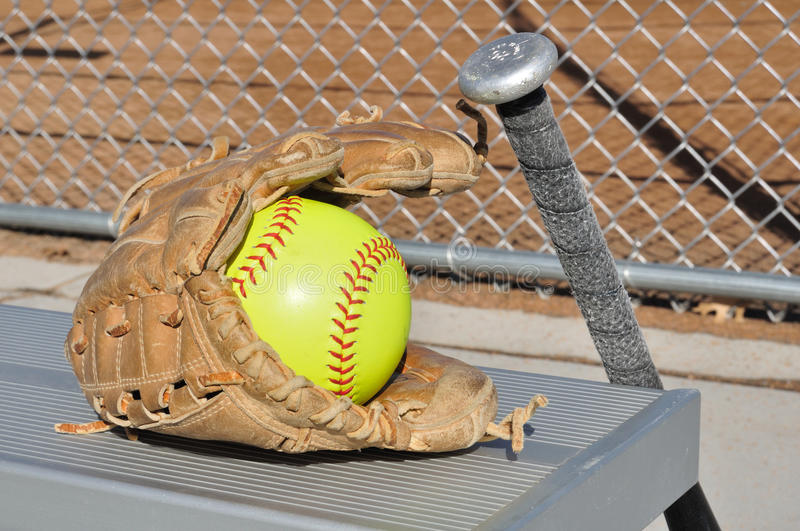
Softball Equipment - What are you Using?
Softball is in season, and you have decided that you want to play softball.
If you are just starting out, what kind of softball equipment you need to buy can be overwhelming. If you are young, and still in school, you have two choices: fastpitch softball, or baseball. With respect to gender, typically, fastpitch is played by females, and baseball is played by males. Keep this in mind when you choose the direction you want to go.
If it has been years since you last played, you probably don’t have any of your softball gear. That’s okay. Here are a few things you will need to get started.
The Basic Softball Equipment You Need
The following is a list of equipment you will need to play softball.
- Glove
- Cleats
- Bat
That is all you need. Seriously, that is the basic equipment needed to play softball.
But WAIT!
Before you go shopping, there are a few things to consider.
To play a pickup game of softball, all you need is a glove, a bat a pair of cleats, and maybe a softball. Imagine if nobody thought to bring a ball or two, how would you play softball?
If you want to try out and play for a team, and you are under the age of 18, there is more equipment you will need. You must wear protective gear – this is required equipment in some leagues and recommended in others. Check with your local softball league to learn more.
Safety is Primary When Playing
- Batting helmet
- Face shield (infield positions, including pitcher)
- Catcher’s mask (catcher’s glove)
- Chest Protector
- Shin Guards
- Mouth guard
- And any other required equipment in accordance with league rules.
In adult softball, protection gear may or may not be optional depending on sanctioned association (ASA/USA, USSSA). Check with your perspective leagues.
The Basic Softball Equipment - Required for Play
These are some of the softball equipment you will need to play softball. Remember to check the softball equipment regulations and requirements with your local school districts, colleges and recreational park leagues.
- Glove
- Cleats
- Bat
- Catcher’s mask (fast or slowpitch)
- Catcher’s mitt (fastpitch)
- Batting helmet (fastpitch)
- Any other required gear to play in your league.
Fastpitch and Slowpitch Softball Gear
You may notice that the equipment used for softball is similar between slowpitch and fastpitch.
The main difference between fast-pitch and slow-pitch comes with how the ball is pitched and the speed involved. Fastpitch bats are made to be used for higher speeds, and using the wrong bat, a slowpitch bat for example, could cause damage to the bat, or possibly injure a player.
Below are some examples of the differences between fastpitch and slowpitch softball, and the reasons why you may need certain softball equipment. Even though Slow and Fastpitch softball have many similarities, There are some differences that you will need to know.
Fastpitch and Slowpitch Gear - Know the Difference
Slowpitch softball is a game where the ball is thrown underhand. The ball is lofted through the air and the arc of the ball must be 4-12 feet from the release of the pitcher’s hand to be considered legal. The ball is moving slower, and a heavier bat is used to hit the ball. The mound is 50 feet from home plate.
Fastpitch softball is a game where the ball is whipped underhand using a windmill or slingshot type of throw. The speed of the ball can measure up to 65 miles an hour, and in comparison to the 90+ mile an hour baseball is thrown from 60 feet, the fastpitch pitcher is only 43 feet away from home plate.
Slowpitch Bats range from 31″ – 34″ in length, and weigh between 24 and 34 ounces, with a maximum of 38 ounces, and the barrel cannot be greater than 2.5 inches in diameter. The regulated associations to consider when you shop for a slow pitch bat are ASA/USA, Senior Softball, and USSSA, among others. The bat will have an association-approved rating stamp on the lower barrel to indicate who has approved the bat for play.
Fastpitch bats are also made of wood, aluminum, and/or composite materials, yet the differences are in the weight and length. Fastpitch bats are lightweight, balanced which means a quicker swing up at the plate. The fastpitch bat is thinner, and if used during a slowpitch game, the bat could crack or even dent the bat barrel. Fastpitch bats are also regulated by the same associations as slowpitch, USA/USSSA.
Softball Gloves/Bats and Cleats – Find the Best One for You
We will start with the easy one first – Cleats.
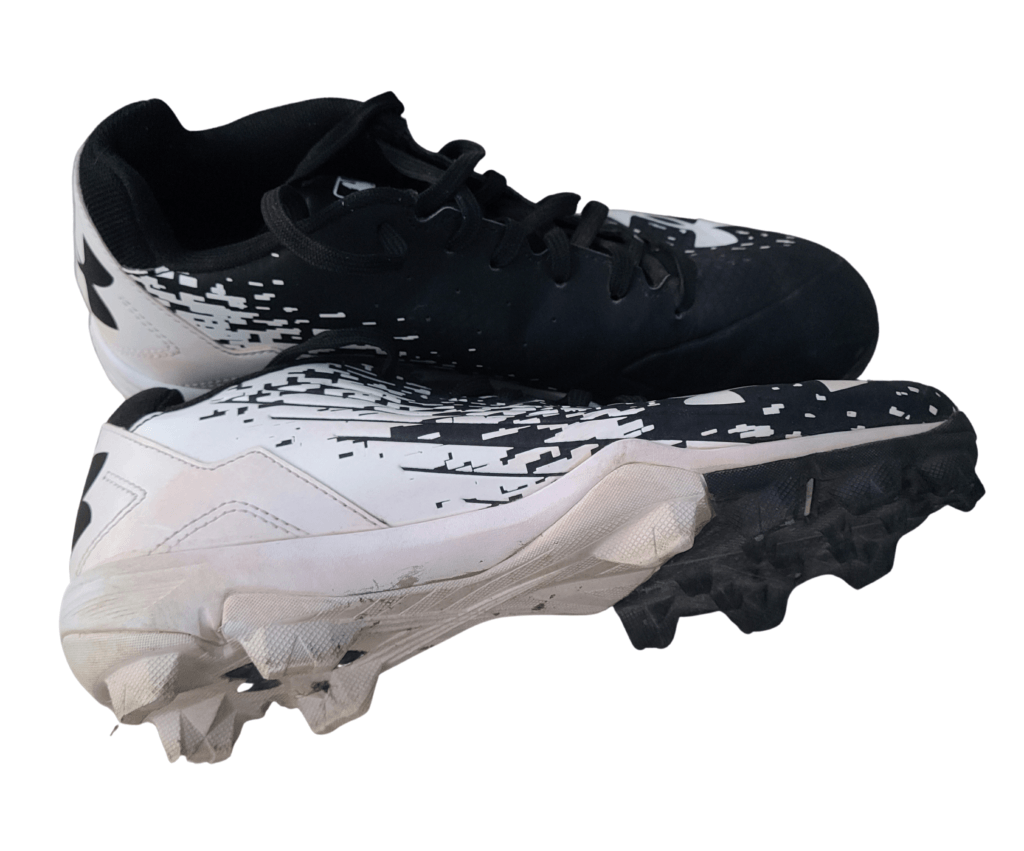
Softball cleats are special shoes that are worn by ballplayers to grab traction on the infield dirt and the outfield grass. The soles of the shoe, or cleats, are made of molded rubber, that have 7-9 ‘cleats’ that cover the bottom of the shoe. (See Image).
There are two types of cleated shoes worn by softball players – metal cleats, and molded rubber cleats. In high school girls fastpitch and women’s college fastpitch softball, metal cleats are acceptable. If you are in high school, check with your local districts for equipment restrictions.
In adult slowpitch softball, metal cleats are prohibited, only molded rubber soled shoes are legal.
Cleat Selection – Sind the Best Fitted Shoes
When you set out to buy a pair of cleats, try them on. Just like any shoe, you want to make sure the shoe fits properly. You want a fit that is snug when laced, yet gives your foot some wiggle room. Especially if you are a pitcher
When you get a pair of cleats, you will find that walking in them is a lot different than wearing a new pair of athletic shoes. Get used to how they feel before you play.
- When buy cleats, you want them snug, with a little bit of room at the toe. Especially pitchers, slowpitch and fastpitch pitchers push off that front foot, and the foot will scoot forward. Try on a pair of cleats with sock, especially if you wear thick tube socks. You don’t want your shoes to be too tight.
- Lace up your shoes each time you put on a pair of cleats.
- If the shoe fits you well, you won’t need to worry about extra padding. After you have played while wearing the cleats, you will soon learn whether you need any extra cushion.
Note: Men’s and women’s and youth shoe sizes are different.
The cleats and cleat patterns are the same, only the shoe size will be different.
Youth-sized cleats will have a smaller cleat pattern.
There is no gender difference between a man’s or a woman’s cleated shoe.
Buying a Glove - Are You a ‘Righty’ or a 'Lefty’?
If you are a righty, or a right-handed person, that means you throw right-handed.
If you are a ‘lefty’, or a left-handed person, that means you throw with your left hand.
When you buy a softball glove for the first time, it might feel strange to put the glove on your opposite hand.Once you play catch, you will feel more comfortable with the glove on the less dominant hand.
Infielder and outfielder gloves are different in that the webbing is longer for the outfielder. The longer glove helps when you are running for a fly ball, that extra couple of inches can make the difference in catching the ball.
There are some differences in the gloves and mitts worn. 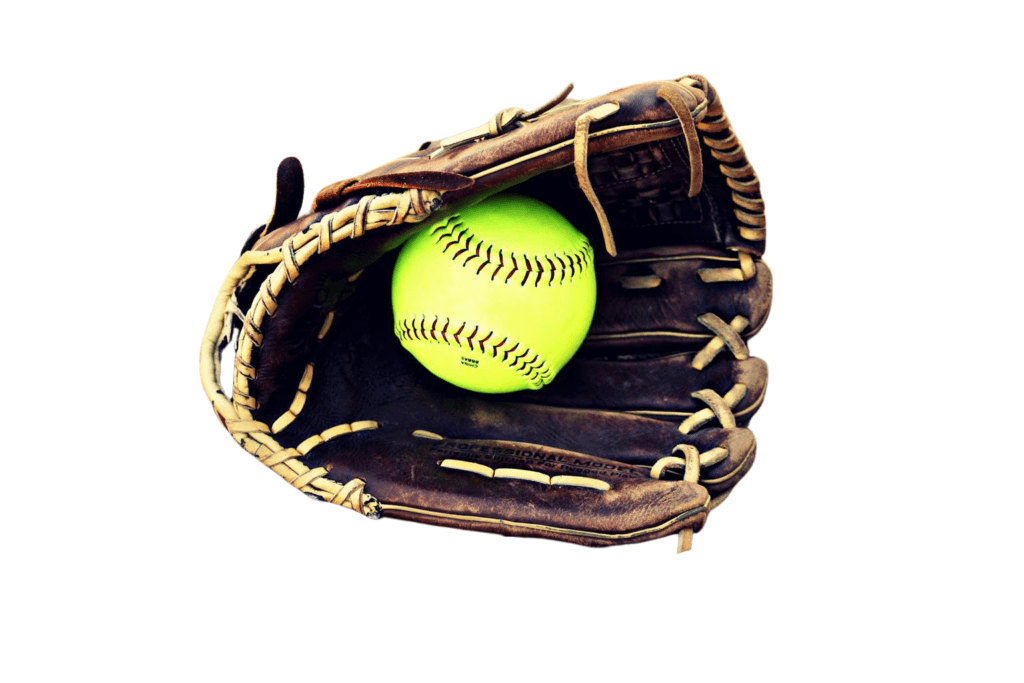 Infielders use a shorter glove because they need to quickly grab the ball to make a throw.
Infielders use a shorter glove because they need to quickly grab the ball to make a throw.
Outfielder gloves are a couple of inches longer, from palm heel to top edge of glove webbing to help catch the ball.
There are two types of catching gear – gloves, and mitts. All fielders wear some type of glove.
The catcher and the first base person use a ‘mitt’.
A fastpitch catcher’s mitt and first base person’s mitt, are built similarly in that they both have only two holes, one for the thumb, and the hand fits into the other, like a ‘mitten’.
A first base person’s glove (left image) opens and closes when the thumb comes together with the fingers. This helps them to catch the ball. The mitt is larger than an infielders glove.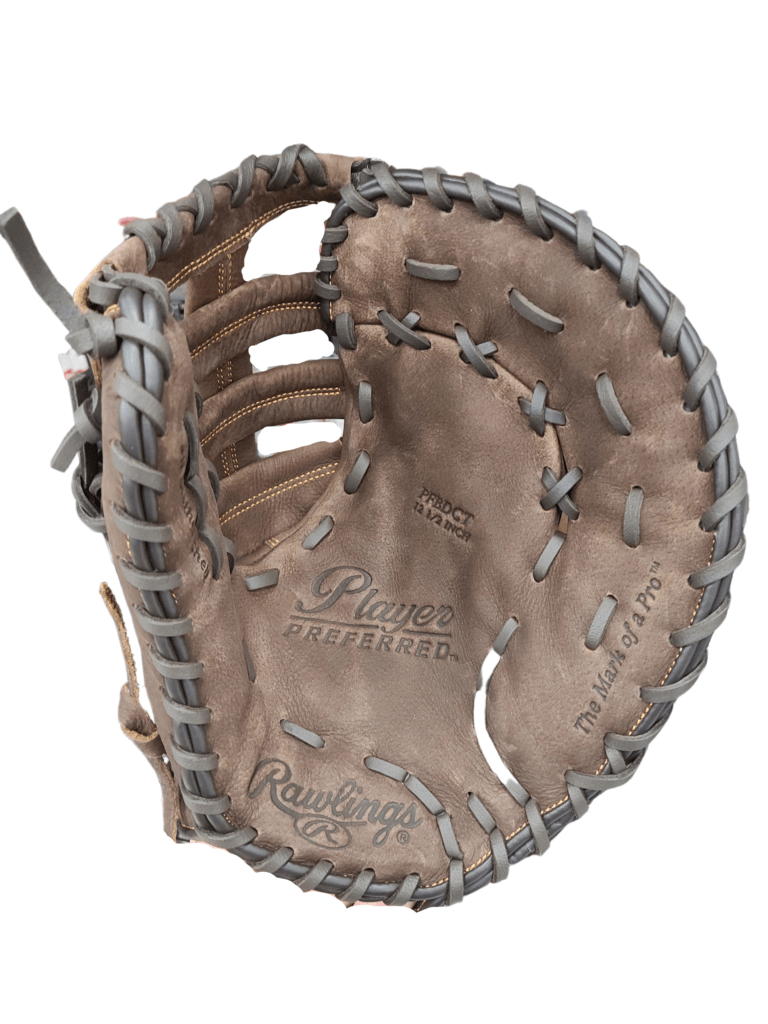
The fastpitch catcher’s mitt has a pocket that is thicker, (right image) and designed to protect the hand from hard, repetitive pitches.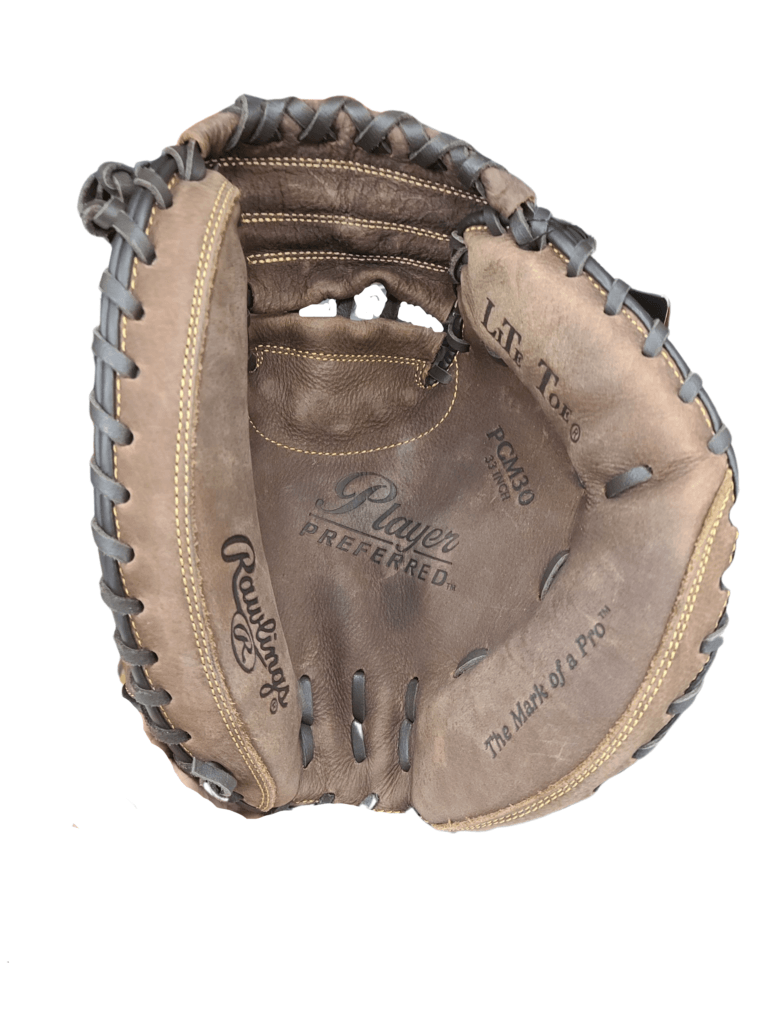
Bring a ball with you when you try on gloves. Granted, the gloves will be stiff when new, yet, they will offer some movement when holding a softball.
When you try on a glove, you want your thumb and fingers to reach deep into the finger slots. This will provide you will a good way to judge the proper fit. To soften the glove, there are a few ways you can get your glove ready for play.
Old school is to rub glove oil into your glove, focusing on the palm and base of fingers because that is where you want to most flexibility. Then take a ball and set it into the glove, wrap the outside of the glove to form the fingers around the ball and leave it for a couple days.
There are other options like steaming the glove at a certain temperature to soften the leather, then form it around a ball an wrap it suing an x-frame using rubber bands for a few hours.
The best way is simply to play catch. You will work the glove to fit your hand perfectly by doing so. Any or all three of these ways to soften your glove will make your glove pliable to use when it comes game time.
Batter Up! - Buying Your Softball Bat
The way I select a bat is to pick it up and swing a few cuts to see how it feels. Sometimes, you will ‘just know’ that is the bat for you.
Whether you play fastpitch or slowpitch softball, especially if you play in an organized softball league, you need to find out about approved bats that you can use in a league game.
Bats have come a long way from the wooden bats, and the first aluminum bates of the 1970s’. Bow you can find bat made of composite materials, combined aluminum and wood and even bamboo.
Slowpitch bats are different than Fast Pitch bats. As mentioned in the previous article ‘All about Softball’ (link this), slowpitch bats are heavier and longer that fastpitch bats, based on the speed of the ball pitched.
Softball bats are tested to determine the BBS or Batted-Ball Speed, which is technical jargon for how fast and at what strength does the ball travel from batter to infielder.
Softball bats fall into two main categories, slowpitch and fastpitch softball.
- The bats are not interchangeable. You cannot use a fastpitch bat in slow pitch, and vise versa.
- Fastpitch is pitched at a higher speed, and the bat made specifically to accommodate the speed of the ball.
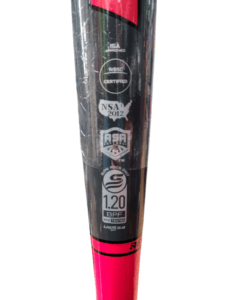
When you go shopping for bats, you want to find out beforehand if any bats are on the disapproved or ‘banned’ bat list.
If you are still in school, you can find out which bats are approved within your school’s physical education department.
As an adult, playing in a park & recreation softball league, your coach should have that information, or you can ask the park & recreation’s office on site.
You can go online to search for your respective softball league (ASA/USA, USSSA, etc) and find out which bats are acceptable. All bats are required to have approved stamp ratings on the bat, itself, that a good umpire will check prior to game.
There are three things to check for when selecting a softball bat:
- Length
- Weight
- Weight-load
Bat length – bat lengths range from 26” for youth, to 34” to high school and adults. Grip the handle of the bat with both hands one atop the other, just above the knob end. In a clear area, get into a batting stance, and take a few swings to see how it feels.
Bat weight – the weight of a bat can range from 23 oz to 36 oz. The ranges allowed will depend on local league rules, so check first before you shop for a bat. A longer bat with a lighter weight might be what you need, based on the type of hitter you are.
Weight-Load – This refers to the bat balance. The weight load of a bat can be evenly distributed or end-loaded. The end-loaded bat is heavier at the bat’s end, and is great for the power hitters and long-ball hitters.
Whichever bat you select, find the one that works best for you.
Now You Are All Ready to Play Ball!
Remember to have fun, no matter your skills or competition level, having fun is the name of the game!
If you have any questions or comments about softball, softball equipment and gear, or want to share some softball trivia, send and email to: coach@thesoftballexpress.com
Join the Softball Express Team!
Get exclusive access to Softball tips, training , workouts and softball gear, whether you are a player, coach, umpire or a die-hard softball fan, all the bases are covered!
